Vision Centre
Southport and Robina
Gold Coast Queensland Australia
Intra-Ocular Lens Implant
Natural Lens Replacement
![]() Patients receiving IOL (Intra-Ocular Lens) treatment often enjoy the best vision of their lives. Thanks to sophisticated formulas used to calculate the corrective prescription power of the lens, the IOL not only replaces the need for glasses in some cases but it also corrects any existing refractive error in the eye too.
Patients receiving IOL (Intra-Ocular Lens) treatment often enjoy the best vision of their lives. Thanks to sophisticated formulas used to calculate the corrective prescription power of the lens, the IOL not only replaces the need for glasses in some cases but it also corrects any existing refractive error in the eye too.
![]() There are two basic types of IOLs; foldable and hard. Foldable lenses are made of silicone or acrylic and can be rolled up and placed inside a tiny tube. The tube is inserted into small incision, usually less than 2.5 mm in length, made in the eye. Once inside the eye, the IOL gently unfolds. Hard plastic lenses are appropriate in certain cases determined by the surgeon. Since they cannot be folded, they are placed through a slightly larger incision.
There are two basic types of IOLs; foldable and hard. Foldable lenses are made of silicone or acrylic and can be rolled up and placed inside a tiny tube. The tube is inserted into small incision, usually less than 2.5 mm in length, made in the eye. Once inside the eye, the IOL gently unfolds. Hard plastic lenses are appropriate in certain cases determined by the surgeon. Since they cannot be folded, they are placed through a slightly larger incision.
IOL Lens Samples
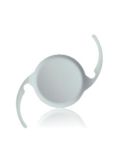
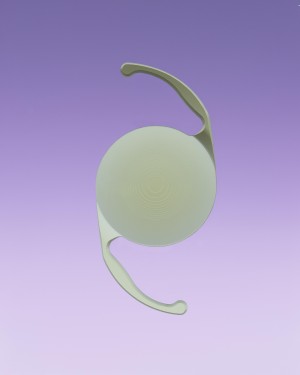
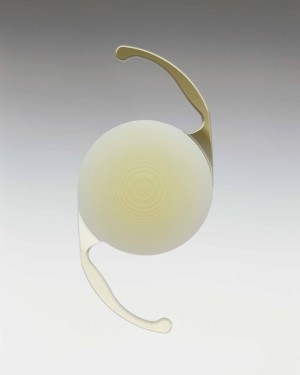
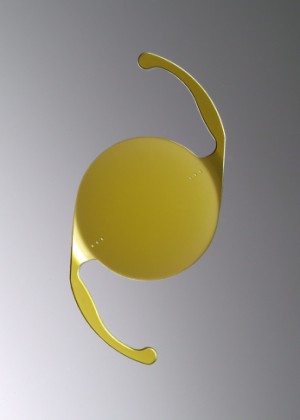
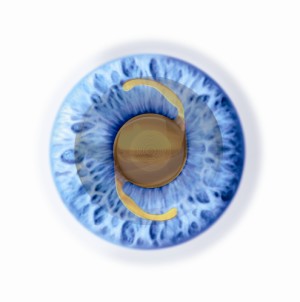
![]() There is an abundance of IOLs from which to choose: aspheric, accommodative, tinted yellow and purple, silicone or acrylic, and both mono- and multifocal. Patients with multifocal IOLs may only need glasses for 10% of the time to fine tune their vision. Statistics show 80% of patients seldom or never use glasses with multifocal IOLs.
There is an abundance of IOLs from which to choose: aspheric, accommodative, tinted yellow and purple, silicone or acrylic, and both mono- and multifocal. Patients with multifocal IOLs may only need glasses for 10% of the time to fine tune their vision. Statistics show 80% of patients seldom or never use glasses with multifocal IOLs.
![]() A multifocal lens is an artificial lens that strives to replicates the performance of the eyes natural lens. The results of multifocal lens implant surgery will vary depending on individual vision. The multifocal IOL could mean independence from glasses. Traditional monofocal lenses usually provide either good distance or close up vision with a need for glasses whereas the multifocal IOL can offer a range of both.
A multifocal lens is an artificial lens that strives to replicates the performance of the eyes natural lens. The results of multifocal lens implant surgery will vary depending on individual vision. The multifocal IOL could mean independence from glasses. Traditional monofocal lenses usually provide either good distance or close up vision with a need for glasses whereas the multifocal IOL can offer a range of both.
The Implant Procedure
![]() Shortly after you are admitted to the Vision Centre Day surgery some eye drops will be instilled to dilate the pupil for surgery.
Shortly after you are admitted to the Vision Centre Day surgery some eye drops will be instilled to dilate the pupil for surgery.
![]() Prior to the procedure, the eye is numbed with local anaesthetic and you will be sedated. Then the surgeon removes the lens using an ultrasound probe through a tiny incision. The surgeon completes the procedure by replacing the removed lens with an artificial lens implant. The lens implant is positioned in the same place as the previously removed natural lens.
Prior to the procedure, the eye is numbed with local anaesthetic and you will be sedated. Then the surgeon removes the lens using an ultrasound probe through a tiny incision. The surgeon completes the procedure by replacing the removed lens with an artificial lens implant. The lens implant is positioned in the same place as the previously removed natural lens.
![]() The operation takes approximately 30 minutes, after which you will be moved to the quiet Recovery Area to recover from the slight effects of your sedation and anaesthesia.
The operation takes approximately 30 minutes, after which you will be moved to the quiet Recovery Area to recover from the slight effects of your sedation and anaesthesia.
![]() It is also possible, and sometimes necessary, to have a general anaesthetic though this procedure is usually safely and successfully done with local anaesthetic and sedation. Most patients are ready to leave within a few hours. A pad may be placed over the eye until your check with the Doctor the next morning. The Ophthalmologist will give you drops to use after surgery, the instructions for eye care and will see you the next day to check on your progress, with a return visit one week after that which usually concludes the process.
It is also possible, and sometimes necessary, to have a general anaesthetic though this procedure is usually safely and successfully done with local anaesthetic and sedation. Most patients are ready to leave within a few hours. A pad may be placed over the eye until your check with the Doctor the next morning. The Ophthalmologist will give you drops to use after surgery, the instructions for eye care and will see you the next day to check on your progress, with a return visit one week after that which usually concludes the process.
![]() Top of Page
Top of Page![]()
Copyright © 2000+ All Rights Reserved